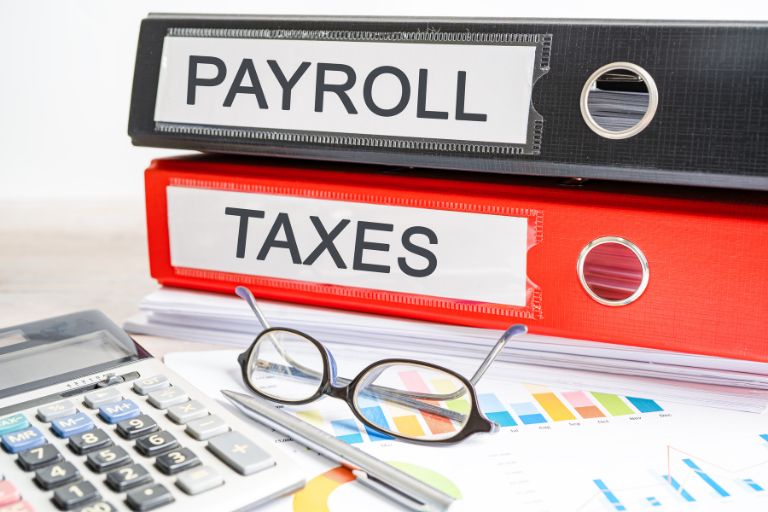Welcome, dear reader, to the thrilling, pulse-pounding world of payroll tax! Yes, you heard right. We’re about to embark on a rollercoaster ride of percentages, deductions, and government forms. Buckle up, because it’s going to be a wild ride!
Now, you may be thinking, “Payroll tax? Isn’t that just a boring part of running a business?” Oh, my dear reader, how wrong you are. Payroll tax is the lifeblood of the business world, the unsung hero of the financial sector, the… well, you get the idea. Let’s dive in, shall we?
The Basics of Payroll Tax
Before we can dive into the deep end of the payroll tax pool, we need to start with the basics. Payroll tax, in its simplest form, is the tax that employers withhold from their employees’ wages and then pay directly to the government. It’s like the tooth fairy, but instead of leaving money under your pillow, they take it from your paycheck. And instead of a fairy, it’s your employer. And instead of teeth, it’s… well, you get the idea.
Payroll taxes are used to fund various government programs, such as Social Security and Medicare. So, in a way, every time you look at your paycheck and see that a chunk of your hard-earned money has gone to payroll taxes, you can think of it as your personal contribution to the well-being of society. Isn’t that heartwarming?
Types of Payroll Taxes
Now, let’s get into the nitty-gritty details. There are two main types of payroll taxes: withholdings and employer taxes. Withholdings are the taxes that are taken directly out of your paycheck. These include federal income tax, Social Security tax, and Medicare tax. It’s like a surprise party that your paycheck throws for the government every pay period.
Employer taxes, on the other hand, are the taxes that your employer pays in addition to your wages. These include unemployment taxes and their portion of Social Security and Medicare taxes. So, in a way, your employer is also throwing a little party for the government. It’s a real tax fiesta!
Calculating Payroll Taxes
Now that we’ve covered the basics, let’s move on to the fun part: calculating payroll taxes. Now, I know what you’re thinking: “Math? Fun? Is this some kind of sick joke?” But trust me, once you get the hang of it, calculating payroll taxes can be as thrilling as a high-speed car chase. Or at least as thrilling as math can get.
The first step in calculating payroll taxes is to determine the employee’s gross pay. This is the total amount of money that the employee earns before any taxes or deductions are taken out. It’s like the raw dough before you bake the tax cookie.
Determining Withholdings
Once you have the gross pay, the next step is to calculate the withholdings. This involves a bit of math, a bit of paperwork, and a whole lot of patience. The exact amount of withholdings will depend on a number of factors, including the employee’s income, filing status, and number of allowances. It’s like a complex puzzle, but instead of a pretty picture at the end, you get a tax form.
To calculate the federal income tax withholding, you’ll need to refer to the IRS’s tax tables. These tables provide the tax rates for different income levels and filing statuses. It’s like a menu, but instead of delicious food, you get tax rates.
Calculating Employer Taxes
Now, let’s move on to the employer taxes. These are calculated based on the employee’s wages and the current tax rates for Social Security, Medicare, and unemployment taxes. It’s like baking a cake, but instead of flour and sugar, you’re using wages and tax rates. And instead of a delicious dessert, you get a tax bill.
The exact calculations can get a bit complicated, but don’t worry. With a bit of practice and a lot of patience, you’ll be calculating payroll taxes like a pro in no time. And who knows? You might even start to enjoy it. After all, as they say, nothing is certain in life except death and taxes. And at least taxes come with a bit of math fun!
Reporting and Paying Payroll Taxes
Once you’ve calculated the payroll taxes, the next step is to report and pay them to the government. This involves filling out a number of forms and making sure that the payments are made on time. It’s like a school project, but instead of a grade, you get the satisfaction of knowing that you’re helping to fund important government programs.
The exact process for reporting and paying payroll taxes can vary depending on the size of your business and the type of taxes involved. But don’t worry, we’ll cover all the details in the next sections. So keep reading, because the fun is just getting started!
Filing Forms
The first step in reporting payroll taxes is to fill out the appropriate forms. For federal taxes, this usually involves filling out Form 941, the Employer’s Quarterly Federal Tax Return. This form is used to report the amount of federal income tax, Social Security tax, and Medicare tax that you withheld from your employees’ wages, as well as the amount of employer taxes that you owe.
Once you’ve filled out Form 941, you’ll need to send it to the IRS along with your tax payment. It’s like sending a letter to a pen pal, but instead of a friendly note, you’re sending a tax form. And instead of a pen pal, it’s the IRS.
Making Payments
Once you’ve filled out the necessary forms, the next step is to make your tax payments. This can usually be done online through the Electronic Federal Tax Payment System (EFTPS). It’s like online shopping, but instead of buying a new pair of shoes, you’re paying your taxes.
The exact due dates for payroll tax payments can vary depending on the size of your business and the amount of your tax liability. However, in general, most businesses are required to make their tax payments on a monthly or semi-weekly basis. So mark your calendars, because tax day is coming!
Common Mistakes and How to Avoid Them
Now that we’ve covered the basics of payroll taxes, let’s talk about some common mistakes that businesses make and how to avoid them. After all, nobody wants to get a letter from the IRS saying that they owe back taxes. That’s about as fun as a root canal.

The first common mistake is failing to withhold the correct amount of taxes from employees’ wages. This can happen if you miscalculate the withholdings or if you fail to update your calculations when tax rates change. To avoid this mistake, make sure to double-check your calculations and stay up-to-date on the latest tax rates.
Not Filing on Time
Another common mistake is failing to file your tax forms on time. This can result in late fees and penalties, which can add up quickly. To avoid this mistake, make sure to mark the
due dates on your calendar and set aside plenty of time to fill out the forms. Remember, it’s better to be early than late when it comes to taxes!
One more common mistake is failing to keep accurate records. This can make it difficult to calculate your taxes and can cause problems if you’re ever audited by the IRS. To avoid this mistake, make sure to keep detailed records of all your payroll transactions. It’s like keeping a diary, but instead of your deepest thoughts and feelings, you’re recording tax information.
Not Staying Up-to-Date on Tax Laws
Finally, a common mistake is failing to stay up-to-date on tax laws. Tax laws can change frequently, and it’s important to stay informed so that you can adjust your payroll procedures accordingly. To avoid this mistake, consider subscribing to a tax news service or consulting with a tax professional. It’s like getting a subscription to a magazine, but instead of celebrity gossip, you get tax updates.
So there you have it, dear reader. The thrilling world of payroll taxes, explained in all its glory. From the basics of payroll taxes to the intricacies of tax calculations, we’ve covered it all. And remember, while payroll taxes may seem daunting at first, with a bit of patience and a lot of humor, you can tackle them like a pro. So go forth and conquer the world of payroll taxes. We believe in you!


